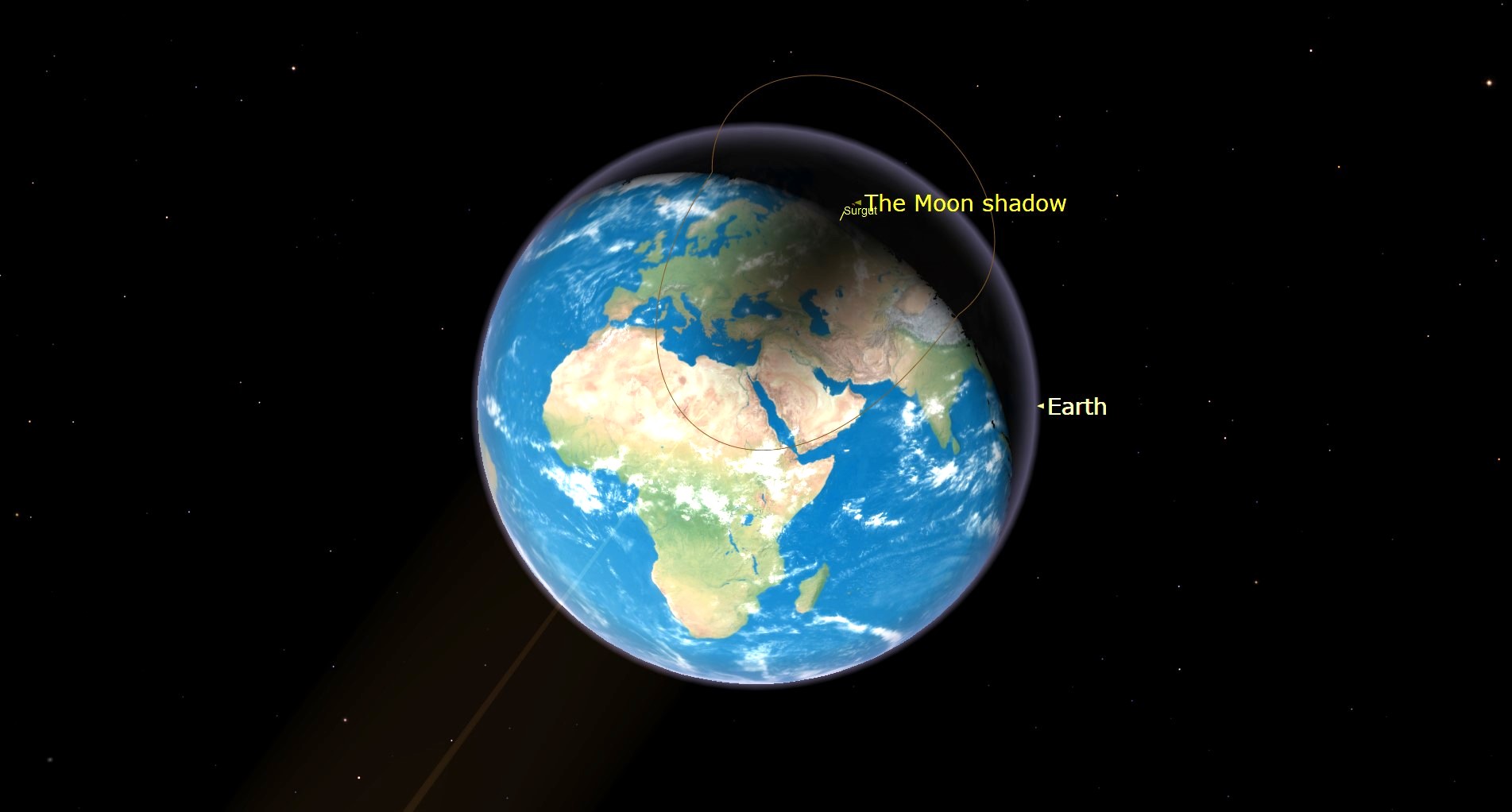On Tuesday (Oct. 25), Earth will experience a partial solar eclipse that will be visible from parts of Europe, western Asia, and northeast Africa. Skywatchers in other parts of the world, such as the U.S., may miss this event in person, but they can watch it live online for free.
The partial solar eclipse will begin at 4:58 a.m. EDT (0858 GMT) on Oct. 25 when the moon passes in front of the sun and will end at approximately 9:01 a.m. EDT (1301 GMT).
The Virtual Telescope Project 2.0 will allow astronomy enthusiasts to watch the partial solar eclipse on Oct. 25 from the comfort of their homes (or offices). The eclipse with be filmed from Rome, Italy, and can be livestreamed online for free here.
The mobile observatory team of the website Time and Date will also live stream the partial eclipse and the coverage will be available to watch on its YouTube channel.
Solar eclipses occur when the moon slips between Earth and the sun casting a shadow on the planet and fully or partially blocking sunlight. The Oct. 25 partial eclipse is the second partial eclipse of 2022, with the last occurring on April 30 and sweeping across the southeast Pacific and southern South America.
Neither partial solar eclipses nor total solar eclipses are ever visible from all parts of the Earth. This is because the moon is much smaller than Earth and its shadow is just a few hundred miles wide, meaning it can only fall on part of the planet’s surface at any one time.
The maximum the disk of the sun will be covered on Oct. 25 is 82% at a location called “the point of central eclipse.” This is the place on Earth at which an imaginary line connecting the center of the sun and the center of the moon meets our planet’s surface.
During the Oct. 25 eclipse, the point of central eclipse will be at the North Pole. Moving from here, regions farther away from the point will see less and less of the sun’s disk eclipsed. In Russia, 80% of the sun will be eclipsed, with this shadowy region dropping to 70% in China, 63% in Norway, and 62% in Finland.

An illustration of the Earth on Oct. 25 showing the moon’s shadow partially obscuring the Earth. (Image credit: Starry Night Software)
This eclipse won’t be a total solar eclipse anywhere in the world because during the event the moon and sun will not be perfectly aligned, thus there’s nowhere on Earth the moon will completely cover the sun.
This means that the sun will appear like a monstrous bite has been taken out of it, a great image in the lead-up to Halloween.
If skywatchers miss this opportunity to see the partial solar eclipse either in-person or online, then they will want to set a reminder for April 20, 2023, when the next total solar eclipse will occur.